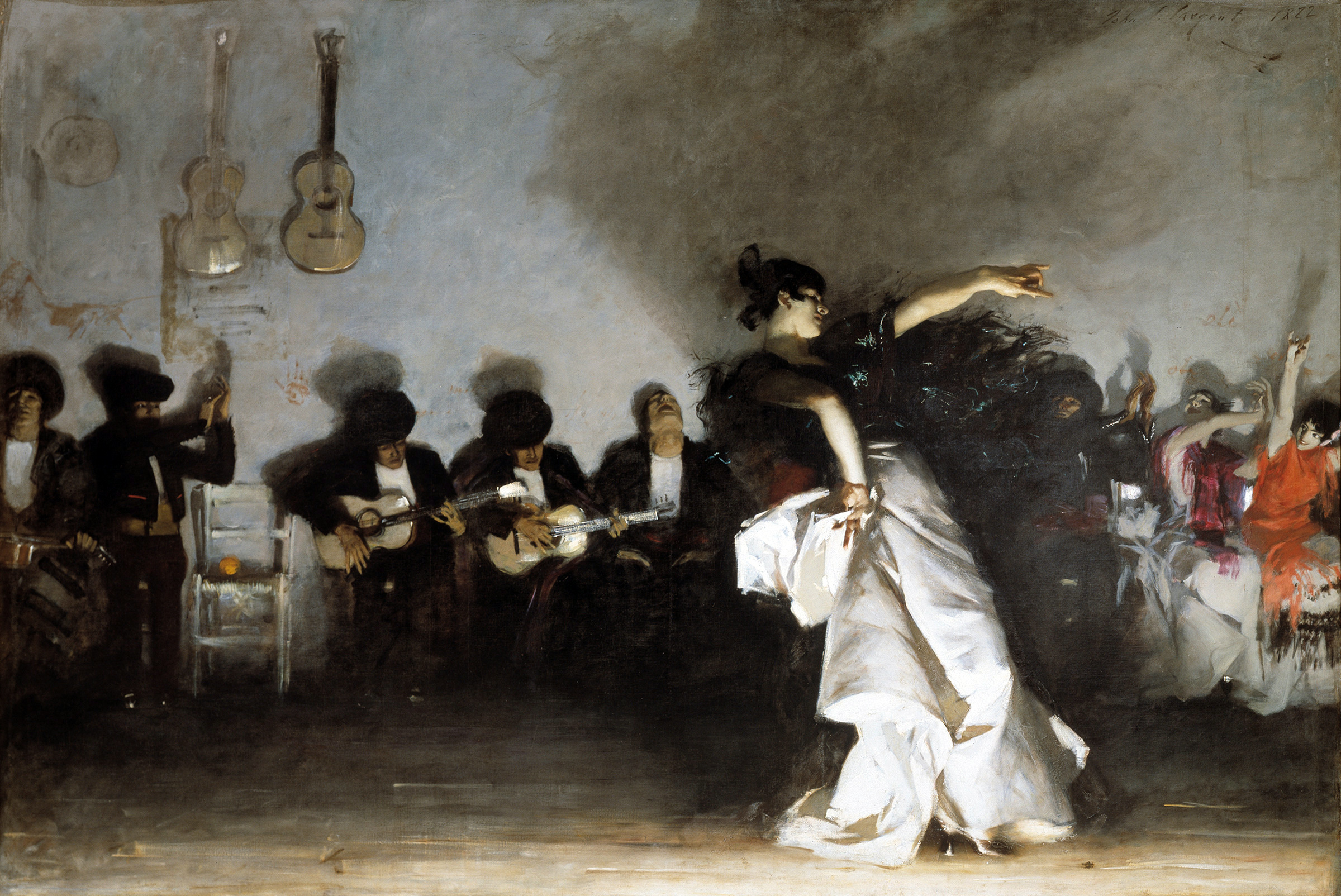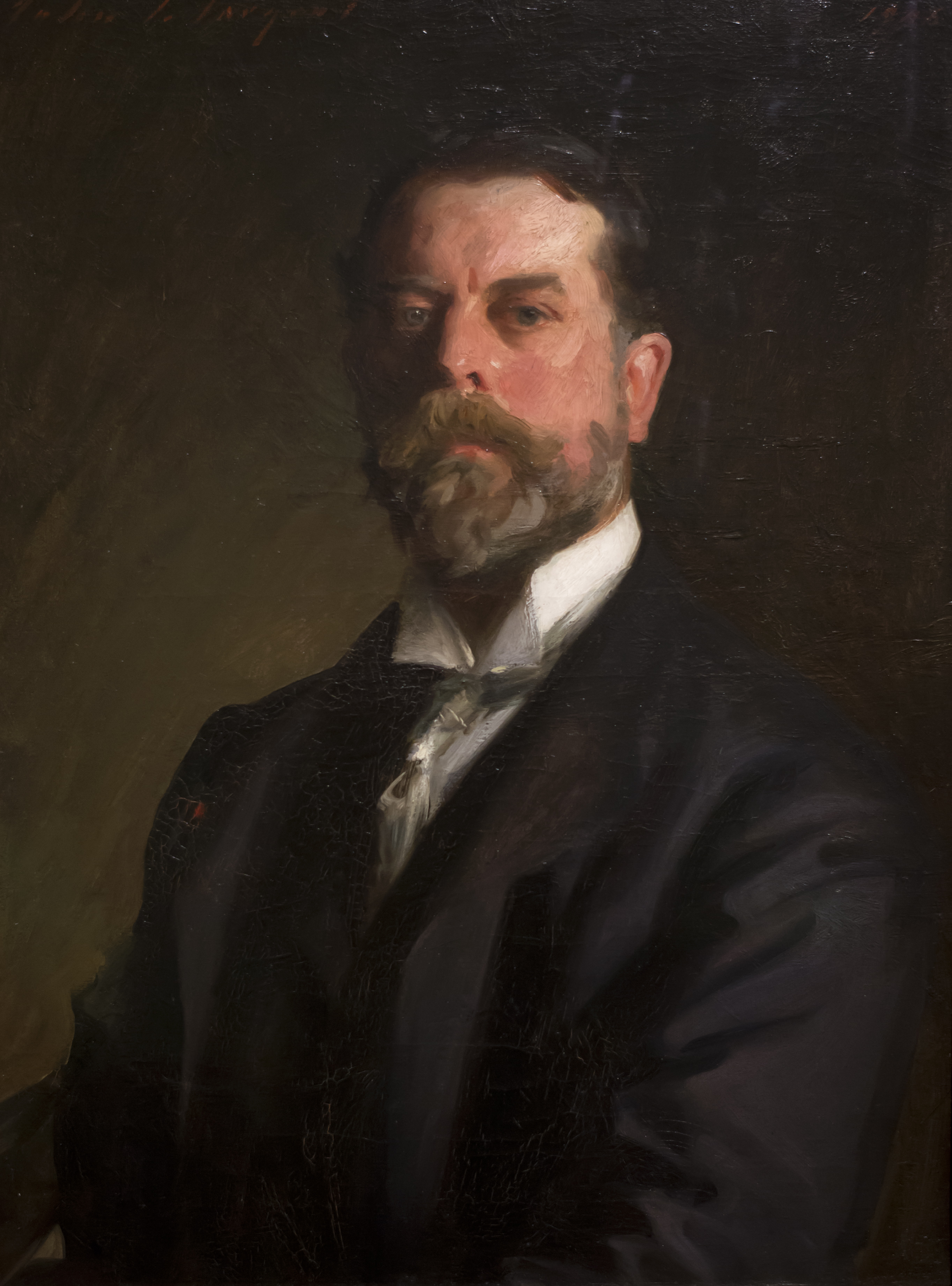



El Jaleo
oil on canvas • 237 × 352 cm
Images like El Jaleo lean toward the daring, risky, unconventional, dramatic, erotically off-center, and odd. Because nomadic Gypsies were believed to ignore ethical principles and exalted superstition over orthodox religion, they endured oppression in numerous countries during the nineteenth century, but artists and bohemians idealized them as free spirits. Bizet’s opera Carmen, first performed in Paris in 1875, scandalized the public with its tale of a proud, lusty Andalusian Gypsy torn between an army officer and a toreador.
During his travels in Spain in 1879, Sargent was mulling over a major work of art in which he could express his love of Gypsy music, dance, and picturesque costumes. On his return to Paris he set to work on a wide horizontal picture whose proportions simulated the shallow stage space of popular musical establishments. He named the painting El Jaleo to suggest the name of a dance, the jaleo de jerez, while counting on the broader meaning jaleo, which means ruckus or hubbub. The painting was exhibited at the Paris Salon of 1882 with the more explicit title El Jaleo: Danse des gitanes (Dance of the Gypsies).
 John Singer Sargent
John Singer Sargent